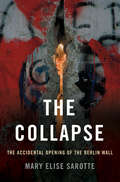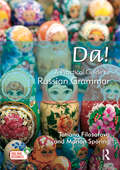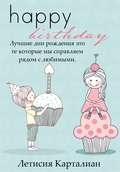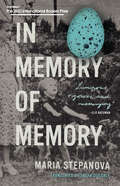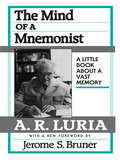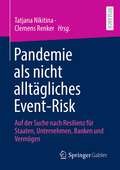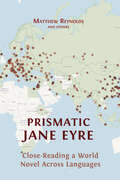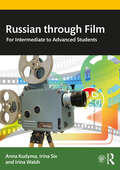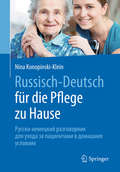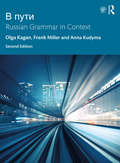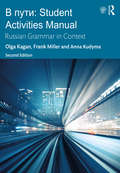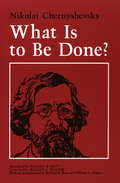- Table View
- List View
The Collapse: The Accidental Opening of the Berlin Wall
by Mary Elise SarotteThe Berlin Wall was erected in 1961 to end all traffic between the city’s two halves: the democratic west and the communist east. The iconic symbol of a divided Europe, the Wall became a focus of western political pressure on East Germany; as Ronald Reagan’s famously said in a 1987 speech in Berlin, "Mr. Gorbachev, tear down this wall!” But as award-winning historian Mary Sarotte shows in [Title TK] , the opening of the Wall on November 9, 1989 was not, as is commonly believed, the East German government’s deliberate concession to outside influence. It was an accident. A carelessly worded memo written by mid-level bureaucrats, a bumbling press conference given by an inept member of the East German Politburo, the negligence of government leaders, the bravery of ordinary people in East and West Berlin--these combined to bring about the end of nearly forty years of oppression, fear, and enmity in divided Berlin. When the news broke, Washington and Moscow could only stand by and watch as Tom Brokaw and other journalists narrated the televised broadcast of this critical moment in the thawing of the cold war. Sarotte opens her story in the months leading up to that fateful day. Following East German dissidents, she shows how their efforts coalesced around opposition to the regime’s restrictions on foreign travel. The city of Leipzig, close to the border with Czechoslovakia, became a hothouse of activism, and protests there quickly grew into massive demonstrations. The East German Politburo hoped to limit its citizens’ knowledge of these marches, but two daring dissidents, East Berliners Aram Radomski and Siegbert Schefke, managed to evade the Stasi and film the largest of them from a church tower. They then smuggled their tape to West Germany; broadcast in both nations, the footage galvanized activists across East Germany, and precipitated the stunning developments on November 9. Facing mounting pressure from its own citizens, the East German Politburo planned to put off enacting any meaningful change to its travel policy by issuing a deceptive ruling that would appear to offer more freedom, but which in fact would allow the state to maintain strict control over its citizen’s movements. But the bureaucrats tasked with preparing the "new” regulations misunderstood their task, and instead drafted a declaration that said East Germans could freely leave the country. This declaration ended up in the hands of regime spokesman Günter Schabowski, who announced the rules at a press conference without understanding their import. Stunned reporters were soon broadcasting the news around the world. Crowds of East Germans began streaming to the Wall, prompting a showdown with border guards, who received no support or direction from East German leadership as the throngs multiplied. By 11:30, Harald Jäger, a second-tier passport control officer, had had enough and finally opened the wall to the mob gathering outside his gate. Even though East German forces successfully regained control by the morning, it was too late--for the wall, for the regime, and for Communism in Eastern Europe. Drawing on evidence from archives in multiple countries and languages, along with dozens of interviews with key actors, including Harald Jäger, [Title TK] is the definitive account of the event that brought down the East German Politburo and came to represent the final collapse of the Cold War order.
Da! A Practical Guide to Russian Grammar
by Tatiana Filosofova Marion SporingDa! A Practical Guide to Russian Grammar is a concise and contemporary combined reference grammar and workbook for intermediate-level students, and is ideal for use both in the classroom and for self-study.The book contains clear explanations of the core areas of Russian grammar. Each point is illustrated with examples of contemporary language usage showing you how grammar works in practice while at the same time enhancing your vocabulary and cultural knowledge. Every chapter ends with a variety of exercises to test your progress and consolidate your understanding. Da! A Practical Guide to Russian Grammar features:Tables to help you absorb more easily specific rules of grammar.Level indicators so you can tailor learning to suit your ability and progress with confidence.In-text icons that identify difficult points of grammar for you so you know where you need to focus that little bit harderA glossary to aid your understanding of complex grammatical terms.Exercises at the ends of chapters so you can test your comprehensionAnswers to Exercises so you can check your own work.With free access to online, interactive exercises with audio that give you practice listening and pronouncing Russian, Da! A Practical Guide to Russian Grammar is one of the most comprehensive resources for Russian grammar available.
Engaging Scientists in Central Asia on Life Science Data Governance Principles: Proceedings Of A Workshop Series
by National Academies of Sciences, Engineering, and Medicine Policy and Global Affairs Division on Earth and Life Studies International Networks and Cooperation Board on Life SciencesTo facilitate scientific progress and collaboration while also protecting personal privacy, the integrity of research investments, and national security, it is important for life science data to be collected, digitized, secured, and shared responsibly. To exchange experiences and collaboratively discuss best practices for protecting life science data and promoting responsible data sharing in Central Asia, the U.S. National Academies of Sciences, Engineering, and Medicine convened a workshop series titled Engaging Scientists in Central Asia on Life Science Data Governance Principles, held virtually across six 2-hour sessions in May and June 2023. The workshop series brought together early-career and established scientists, along with experts in data science, cybersecurity, and law, from Kazakhstan, Kyrgyzstan, Tajikistan, the United States, Uzbekistan, and elsewhere to explore existing policies and practices, gaps and limitations, fundamental concepts relevant to data governance, and opportunities for improvement in data sharing practices and governance structures.
Happy Bithday
by Alexandra Golovinskaya Letícia KartalianЭти двое влюблены, известны и очень заняты на работе, но существуют дни которые они стараются провести вместе... Их дни рождения это одни из них. С мужской и женской точек зрения, Happy Birthday говорит об интенсивных отношениях двух людей друг с другом, о дружбе, о работе, и особенно о любви.
How Divine Images Became Art
by Oleg TarasovHow Divine Images Became Art tells the story of the parallel ‘discovery’ of Russian medieval art and of the Italian ‘primitives’ at the beginning of the twentieth century. While these two developments are well-known, they are usually studied in isolation. Tarasov’s study has the great merit of showing the connection between the art world in Russia and the West, and its impact in the cultural history of the continent in the pre-war period.
In Memory of Memory
by Maria Stepanova Sasha DugdaleShortlisted for the 2021 International Booker Prize Winner of the 2018 Bolshaya Kniga Award Winner of the 2019 NOS Literature PrizeAn exciting contemporary Russian writer explores terra incognita: the still-living margins of history.With the death of her aunt, the narrator is left to sift through an apartment full of faded photographs, old postcards, letters, diaries, and heaps of souvenirs: a withered repository of a century of life in Russia. Carefully reassembled with calm, steady hands, these shards tell the story of how a seemingly ordinary Jewish family somehow managed to survive the myriad persecutions and repressions of the last century.In dialogue with writers like Roland Barthes, W. G. Sebald, Susan Sontag, and Osip Mandelstam, In Memory of Memory is imbued with rare intellectual curiosity and a wonderfully soft-spoken, poetic voice. Dipping into various forms—essay, fiction, memoir, travelogue, and historical documents—Stepanova assembles a vast panorama of ideas and personalities, offering an entirely new and bold exploration of cultural and personal memory.Praise for In Memory of Memory:"A luminous, rigorous, and mesmerizing interrogation of the relationship between personal history, family history, and capital-H History. I couldn't put it down; it felt sort of like watching a hypnotic YouTube unboxing-video of the gift-and-burden that is the twentieth century. In Memory of Memory has that trick of feeling both completely original and already classic, and I confidently expect this translation to bring Maria Stepanova a rabid American fan base on the order of the one she already enjoys in Russia." —Elif Batuman, author of The Idiot, finalist for the Pulizter Prize for Fiction"There is simply no book in contemporary Russian literature like In Memory of Memory. A microcosm all its own, it is an inimitable journey through a family history which, as the reader quickly realizes, becomes a much larger quest than yet another captivating family narrative. Why? Because it asks us if history can be examined at all, yes, but does so with incredible lyricism and fearlessness. Because Stepanova teaches us to find beauty where no one else sees it. Because Stepanova teaches us to show tenderness towards the tiny, awkward, missed details of our beautiful private lives. Because she shows us that in the end our hidden strangeness is what makes us human. This, I think, is what makes her a truly major European writer. I am especially grateful to Sasha Dugdale for her precise and flawless translation which makes this book such a joy to read in English. This is a voice to live with." —Ilya Kaminsky, author of Deaf Republic"Dazzling erudition and deep empathy come together in Maria Stepanova's profound engagement with the power and potential of memory, the mother of all muses. An exploration of the vast field between reminiscence and remembrance, In Memory of Memory is a poetic appraisal of the ways the stories of others are the fabric of our history." —Esther Kinsky, author of Grove"A book to plunge into. 'Everyone else's ancestors had taken part in history' writes Stepanova; building itself via accumulation, these chapters become an important testimony to the cultural and political lives of the people held beneath the surface of the tides of history" —Andrew McMillan, author of Playtime
The Mind of a Mnemonist: A Little Book about a Vast Memory, With a New Foreword by Jerome S. Bruner
by A. R. LuriaThis study explores the inner world of a rare human phenomenon—a man who was endowed with virtually limitless powers of memory. From his intimate knowledge of S., the mnemonist, gained from conversations and testing over a period of almost thirty years, A. R. Luria is able to reveal in rich detail not only the obvious strengths of S.’s astonishing memory but also his surprising weaknesses: his crippling inability to forget, his pattern of reacting passively to life, and his uniquely handicapped personality.
Pandemie als nicht alltägliches Event-Risk: Auf der Suche nach Resilienz für Staaten, Unternehmen, Banken und Vermögen
by Tatiana Nikitina Clemens RenkerSchnell und agil lieferten erstmals via Zoom-Seminare renommierte Wissenschaftler aus Deutschland, Russland und Polen während der Pandemie 2020/2021 Antworten für mehr Widerstandsfähigkeit in Wirtschaft und Gesellschaft. Die zusammengefassten Beiträge bieten Lösungsanstöße für wirtschaftliche, soziale, rechtliche und gesellschaftliche Fragen aufgrund der Auswirkungen von COVID-19. Insbesondere werden die internationale Unternehmensbesteuerung, die Zukunft des Bankensektors, die Stabilität des Arbeitsmarktes, Entwicklungen auf den Immobilienmärkten, Optimierungen der städtischen Logistik, Herausforderungen für das Gesundheitssystems, die Sicherung der Beschäftigung, Probleme des Rentensystems und innovative Geschäftsmodelle thematisiert. Das International Centre for Financial Markets Research ICFMR der Staatlichen Universität für Wirtschaft Sankt Petersburg und der „Petersburger Dialog“ unterstützten die laufende Partnerschaft zwischen Deutschland und Russland in den schwierigen Zeiten: Für Frieden und Wohlstand.
Prismatic Jane Eyre: Close-Reading a World Novel Across Languages
by Matthew Reynolds OthersJane Eyre, written by Charlotte Brontë and first published in 1847, has been translated more than five hundred times into over sixty languages. Prismatic Jane Eyre argues that we should see these many re-writings, not as simple replications of the novel, but as a release of its multiple interpretative possibilities: in other words, as a prism. Prismatic Jane Eyre develops the theoretical ramifications of this idea, and reads Brontë’s novel in the light of them: together, the English text and the many translations form one vast entity, a multilingual world-work, spanning many times and places, from Cuba in 1850 to 21st-century China; from Calcutta to Bologna, Argentina to Iran. Co-written by many scholars, Prismatic Jane Eyre traces the receptions of the novel across cultures, showing why, when and where it has been translated (and no less significantly, not translated – as in Swahili), and exploring its global publishing history with digital maps and carousels of cover images. Above all, the co-authors read the translations and the English text closely, and together, showing in detail how the novel’s feminist power, its political complexities and its romantic appeal play out differently in different contexts and in the varied styles and idioms of individual translators. Tracking key words such as ‘passion’ and ‘plain’ across many languages via interactive visualisations and comparative analysis, Prismatic Jane Eyre opens a wholly new perspective on Brontë’s novel, and provides a model for the collaborative close-reading of world literature. Prismatic Jane Eyre is a major intervention in translation and reception studies and world and comparative literature. It will also interest scholars of English literature, and readers of the Brontës.
Radioactive Sources: Applications and Alternative Technologies: Russian Version
by National Academies of Sciences, Engineering, and Medicine Division on Earth and Life Studies Nuclear and Radiation Studies Board Committee on Radioactive Sources: Applications and Alternative TechnologiesRadioactive Sources: Applications and Alternative Technologies assesses the status of medical, research, sterilization, and other commercial applications of radioactive sources and alternative (nonradioisotopic) technologies in the United States and internationally. Focusing on Category 1, 2, and 3 sources, this report reviews the current state of these sources by application and reviews the current state of existing technologies on the market or under development that are or could be used to replace radioisotopic technologies in those applications. Radioactive Sources will support existing and future activities under the National Nuclear Security Administration Office of Radiological Security program to reduce the use of high-risk radiological materials in commercial applications.
Russian through Film: For Intermediate to Advanced Students
by Anna Kudyma Irina Six Irina WalshRussian through Film: For Intermediate to Advanced Students is a multi-level textbook for learners of Russian that targets contemporary films in Russian. These films will deepen learners’ understanding of today’s lifestyles in the post-Soviet space as well as add to their understanding of Soviet and Russian history and culture. They represent a variety of genres ranging from romantic comedy to art-house cinema. These films present standard Russian and are appropriate for various audiences. Russian through Film builds on students’ listening, reading, speaking, and writing skills while also expanding their cultural literacy. The textbook aims at improving learners’ ability to analyze films by carefully investigating the films’ plot, structure, conflicts, and main characters. Through task-based, inquiry-based, and project-based activities, the textbook focuses on developing learners’ skills in various modes of discourse (narration, description, comparison, explanation, and summary). The textbook can serve as a primary text for a course on contemporary Russian films or a supplementary textbook in intermediate and advanced level classes. Separate chapters may be included in thematic classes on youth culture, Soviet history, sports, geography, folklore, contemporary social issues, and the arts.
Russisch - Deutsch für die Pflege zu Hause
by Nina Konopinski-Klein Karén Khachatryan Daniel-Beck Dagmar Seitz Joanna KonopinskiSprachführer für den Pflegealltag Russisch-DeutschDieses übersichtliche Wörterbuch ist ein unverzichtbarer Helfer im Gespräch. Begriffe und einfache Sätze aus dem Alltag werden in beiden Sprachen aufgeführt und erleichtern die Verständigung im Alltag. Einfache Dialoge zu Alltagsthemen wie z.B. Wohlbefinden, Krankheit, Arztbesuch, Haushalt, und Ernährung. Aber auch wichtige Fachbegriffe werden elräutert. Zahlreiche Abbildungen unterstützen das Gespräch und hilfreiche Vokabellisten erleichtern das Lernen neuer Wörter.Empfehlenswert für russisch sprechende Pflegekräfte und Haushaltshilfen, die in Deutschland arbeiten; aber auch Senioren und Angehörige finden darin Hilfen zum Gespräch. Рассмативаемый разговорник- незаменимый помощник в общении. В текстах на русском и немецком языках представлены предложения, необходимые для облегчения повседневного контакта, а также специальные фразы, употребляемые в процессе ухода за пациентом.Представлены часто употреблаемые простые диалоги, необходимые при посещении врача, банка, магазинов и т.д.Диалоги снабжены иллюстрациями.Имеется большой запас слов, необходимых санитарам для работы в немецкой среде, для общения с пожилыми пациентами и членами их семей.
Translating Russian Literature in the Global Context
by Muireann Maguire Cathy McAteerTranslating Russian Literature in the Global Context examines the translation and reception of Russian literature as a world-wide process. This volume aims to provoke new debate about the continued currency of Russian literature as symbolic capital for international readers, in particular for nations seeking to create or consolidate cultural and political leverage in the so-called ‘World Republic of Letters’. It also seeks to examine and contrast the mechanisms of the translation and uses of Russian literature across the globe. This collection presents academic essays, grouped according to geographical location, by thirty-seven international scholars. Collectively, their expertise encompasses the global reception of Russian literature in Europe, the Former Soviet Republics, Africa, the Americas, and Asia. Their scholarship concentrates on two fundamental research areas: firstly, constructing a historical survey of the translation, publication, distribution and reception of Russian literature, or of one or more specific Russophone authors, in a given nation, language, or region; and secondly, outlining a socio-cultural microhistory of how a specific, highly influential local writer, genre, or literary group within the target culture has translated, transmitted, or adapted aspects of Russian literature in their own literary production. Each section is prefaced with a short essay by the co-editors, surveying the history of the reception of Russian literature in the given region. Considered as a whole, these chapters offer a wholly new overview of the extent and intercultural penetration of Russian and Soviet literary soft power during the twentieth and twenty-first centuries. This volume will open up Slavonic Translation Studies for the general reader, the student of Comparative Literature, and the academic scholar alike.
V Puti: Russian Grammar in Context
by Olga Kagan Frank Miller Anna KudymaThis highly successful program assists in the development of all the language skills (listening, speaking, reading, and writing) by presenting realistic settings, situations, and contexts. It consists of 12 chapters and can be used in an intermediate or advanced Russian course. V Puti offers conversational exercises, various readings (biographies, poems, literature and historical texts) and grammatical explanations and practice. All of these components reinforce Russian culture and history which enable the students to understand the Russian language in context.
V Puti: Russian Grammar in Context
by Frank Miller Olga Kagan Anna KudymaThis highly successful program assists in the development of all the language skills (listening, speaking, reading and writing) by presenting realistic settings, situations and contexts. It consists of 12 chapters and can be used in an intermediate or advanced Russian course. V Puti offers conversational exercises, various readings (biographies, poems, literature and historical texts) and grammatical explanations and practice. All of these components reinforce Russian culture and history which enable the students to understand the Russian language in context. V Puti: Student Activities Manual is an integral part of the V Puti course. The structure matches the main textbook and provides a wealth of exercises and activities, either for class-use or homework.
What Is to Be Done?
by Michael R. Katz Nikolai Chernyshevsky William G. Wagner"No work in modern literature, with the possible exception of Uncle Tom's Cabin, can compete with What Is to Be Done? in its effect on human lives and its power to make history. For Chernyshevsky's novel, far more than Marx's Capital, supplied the emotional dynamic that eventually went to make the Russian Revolution."--Joseph Frank, The Southern ReviewAlmost from the moment of its publication in 1863, Nikolai Chernyshevsky's novel, What Is to Be Done?, had a profound impact on the course of Russian literature and politics. The idealized image it offered of dedicated and self-sacrificing intellectuals transforming society by means of scientific knowledge served as a model of inspiration for Russia's revolutionary intelligentsia. On the one hand, the novel's condemnation of moderate reform helped to bring about the irrevocable break between radical intellectuals and liberal reformers; on the other, Chernyshevsky's socialist vision polarized conservatives' opposition to institutional reform. Lenin himself called Chernyshevsky "the greatest and most talented representative of socialism before Marx"; and the controversy surrounding What Is to Be Done? exacerbated the conflicts that eventually led to the Russian Revolution.Michael R. Katz's readable and compelling translation is now the definitive unabridged English-language version, brilliantly capturing the extraordinary qualities of the original. William G. Wagner has provided full annotations to Chernyshevsky's allusions and references and to the, sources of his ideas, and has appended a critical bibliography. An introduction by Katz and Wagner places the novel in the context of nineteenth-century Russian social, political, and intellectual history and literature, and explores its importance for several generations of Russian radicals.
